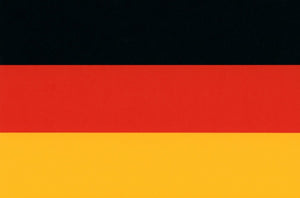Do you have trouble keeping your favorite white clothes in perfect condition? The fight against stubborn stains and yellowing can be quite a challenge, but don't worry! In this article, we will show you how to effectively wash white items to keep them bright for longer. Discover home remedies that will help you enjoy bright clothes without having to reach for strong chemicals!
How to wash white clothes in a washing machine and by hand?
When faced with the task of washing white clothes, you probably wonder whether it's better to use a washing machine or do it by hand. Here are a few tips to help you make a decision:
Washing machine:When using the washing machine, you should select the appropriate washing program dedicated to white fabrics. However, how to choose the best program for white laundry? The first step should be to check what the symbols on the labels are. Washing symbols are the best instruction from the manufacturer on how to treat white clothing. They specify the temperature, the possibility of dry cleaning, and tips for drying and ironing.
Unfortunately, sometimes such markings are missing, and the question arises of how to wash light clothes so that they look like new. The answer is quite simple: opt for a program with a low temperature to avoid the risk of staining the clothes. Programs using warm water can accelerate the yellowing process of fabrics, so it is recommended to use lower temperatures.
During washing, it is also worth adding the appropriate detergent to the washing machine drum, which contains special bleaching ingredients. It is important to avoid strong chemical agents that can damage the delicate fibers of the fabrics. Additionally, you can use home bleaching ingredients, such as baking soda or hydrogen peroxide. These natural products effectively remove stains and refresh the whiteness of clothes while not harming the environment.
When using the washing machine, you should select the appropriate washing program dedicated to white fabrics. However, how to choose the best program for white laundry? The first step should be to check what the symbols on the labels are. Washing symbols are the best instruction from the manufacturer on how to treat white clothing. They specify the temperature, the possibility of dry cleaning, and tips for drying and ironing.
Unfortunately, sometimes such markings are missing, and the question arises of how to wash light clothes so that they look like new. The answer is quite simple: opt for a program with a low temperature to avoid the risk of staining the clothes. Programs using warm water can accelerate the yellowing process of fabrics, so it is recommended to use lower temperatures.
During washing, it is also worth adding the appropriate detergent to the washing machine drum, which contains special bleaching ingredients. It is important to avoid strong chemical agents that can damage the delicate fibers of the fabrics. Additionally, you can use home bleaching ingredients, such as baking soda or hydrogen peroxide. These natural products effectively remove stains and refresh the whiteness of clothes while not harming the environment.
Hand washing:If you have the time and inclination, it is worth considering hand washing white clothes. This process not only allows for control over every detail but is also gentler on the fabrics.
To begin hand washing, after removing the dirty clothes from the laundry basket, you should soak the clothes in warm water with added detergent for a few hours. Then, gently dab at the stains with a brush or sponge, avoiding too much rubbing, which can damage the fabrics.
Drying white fabricsAfter thoroughly rinsing the clothes, it is important to dry them properly to maintain their excellent condition and whiteness. Direct sunlight should be avoided during drying, as UV rays can accelerate the yellowing of fabrics and lead to a loss of color intensity. Therefore, it is recommended to dry clothes in the shade or in a shaded area where they are evenly exposed to air.
You can also use tumble dryers, but it is important to remember to use lower temperature settings and a gentle drying cycle to avoid damaging the fabrics. This way, you will keep the brightness and freshness of your white clothes for longer, enjoying their excellent appearance for many more washes.
In summary, both washing machines and hand washing have their advantages and can be effective methods for washing white clothes. It is important to choose the right detergents and bleaching agents that will maintain the excellent condition of the fabrics.
If you have the time and inclination, it is worth considering hand washing white clothes. This process not only allows for control over every detail but is also gentler on the fabrics.
To begin hand washing, after removing the dirty clothes from the laundry basket, you should soak the clothes in warm water with added detergent for a few hours. Then, gently dab at the stains with a brush or sponge, avoiding too much rubbing, which can damage the fabrics.
After thoroughly rinsing the clothes, it is important to dry them properly to maintain their excellent condition and whiteness. Direct sunlight should be avoided during drying, as UV rays can accelerate the yellowing of fabrics and lead to a loss of color intensity. Therefore, it is recommended to dry clothes in the shade or in a shaded area where they are evenly exposed to air.
You can also use tumble dryers, but it is important to remember to use lower temperature settings and a gentle drying cycle to avoid damaging the fabrics. This way, you will keep the brightness and freshness of your white clothes for longer, enjoying their excellent appearance for many more washes.
In summary, both washing machines and hand washing have their advantages and can be effective methods for washing white clothes. It is important to choose the right detergents and bleaching agents that will maintain the excellent condition of the fabrics.
Which program for white laundry - how many degrees?
Choosing the right washing program for white clothes is crucial for maintaining their excellent condition. Temperature plays an important role here, as it can affect the effectiveness of washing and the appearance of fabrics after the washing process. It is generally recommended to use programs with a temperature of up to 40 degrees Celsius. This temperature is sufficient for effectively removing stains and dirt while minimizing the risk of discoloration or yellowing of the fabrics.
However, there are situations where a lower temperature may prove insufficient, especially when dealing with very dirty clothes or hard-to-remove stains. In such cases, you may choose to use a program with a higher temperature, for example, 60 degrees. High temperature can help effectively remove tough stains and provide better disinfection of the clothes. However, it is important to remember the risk of yellowing of the fabrics and the possibility of some materials shrinking at high temperatures.
Before choosing the right program, it is also worth considering the type of fabrics from which the clothes are made. Some materials may be sensitive to high temperatures and require a gentler approach. Therefore, before deciding on a washing program, check the label for washing recommendations for that fabric.
Washing white items to prevent yellowing — home remedies
What to wash white clothes with? To avoid yellowing of white garments, it is worth reaching for proven home remedies that not only effectively whiten fabrics but also do not harm their structure. Here are a few suggestions that can help you maintain the snow-white appearance of your favorite clothes:
- Baking soda: Adding 1/2 cup of baking soda to the washing machine drum along with detergent can be an effective way to whiten fabrics. Baking soda has bleaching properties and removes stubborn stains, leaving clothes clean and fresh.
- Hydrogen peroxide: Pouring 1/2 cup of hydrogen peroxide into the detergent compartment of the washing machine can be an excellent way to whiten white clothes. Hydrogen peroxide not only effectively removes dirt but also disinfects fabrics, eliminating bacteria and unpleasant odors.
- White vinegar: Adding 1/4 cup of white vinegar to the final rinse is another effective home remedy for maintaining the whiteness of clothes. Vinegar not only acts as a natural bleach but also softens fabrics, leaving them soft and fluffy to the touch.
- Lemon juice: Squeezing the juice of one lemon and adding it to the washing machine drum or to the rinse can be a simple yet effective way to whiten white clothes. Citric acid acts as a natural bleach, effectively removing stains and refreshing fabrics.
However, remember to use these home remedies in moderation and with caution, especially if you are dealing with delicate fabrics. Before using any agent, it is recommended to perform a test on a small area of the fabric to ensure that it will not cause any undesirable effects, such as discoloration or damage to the fibers.
FAQ - Frequently Asked Questions
What to add to the laundry to make it white?For washing white items, you can add baking soda, hydrogen peroxide, white vinegar, or lemon juice, which have bleaching properties and remove stains.
For washing white items, you can add baking soda, hydrogen peroxide, white vinegar, or lemon juice, which have bleaching properties and remove stains.
How to do white laundry in the washing machine?
To do white laundry in the washing machine, select the appropriate program dedicated to white fabrics, add a detergent containing bleaching agents and home ingredients such as baking soda or hydrogen peroxide, and then choose the appropriate temperature.
What program should I use to wash white clothes?It is best to wash white items in a washing program dedicated to white fabrics, using a lower temperature to avoid yellowing of the fabrics.
What is the best detergent for washing white clothes?The best powder for washing whites should contain bleaching agents and be suitable for delicate fabrics so as not to damage the fibers. You can also use household ingredients such as baking soda or hydrogen peroxide to enhance the detergent's effectiveness.
It is best to wash white items in a washing program dedicated to white fabrics, using a lower temperature to avoid yellowing of the fabrics.
The best powder for washing whites should contain bleaching agents and be suitable for delicate fabrics so as not to damage the fibers. You can also use household ingredients such as baking soda or hydrogen peroxide to enhance the detergent's effectiveness.



